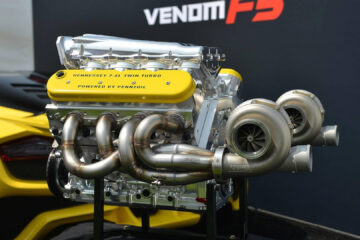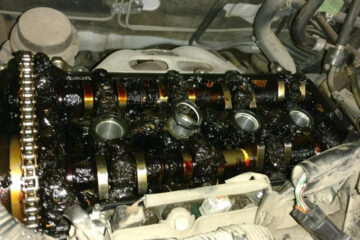Japanese automotive engineering—synonymous with reliability, durability, and low maintenance—has created a global perception that every engine built in Japan is nearly bulletproof. From the Honda Civic to the Toyota Tacoma, Japanese-made vehicles enjoy legendary reputations. But: how much of this reputation is grounded in fact and how much is simply excellent marketing?
This article examines common beliefs around Japanese engine reliability, scrutinizes data, legacy, regional differences, and design philosophies, and separates myths from reality. The goal is a balanced, fact-based perspective for enthusiasts, buyers, and industry watchers.
1. Myth: “Japanese Engines Never Break Down”
The Perception
- Typical claims: “Japanese cars run forever,” “You can drive them to 300,000 miles,” “Just change the oil—never worry again.”
- Brand associations: Honda, Toyota, Nissan, Subaru, Mazda.
- Reinforced by resale values and long-term ownership posts on forums.
Reality Check
While longevity is well-supported, it’s misleading to imply zero mechanical issues.
Real-world data:
- RDHs (Reliable Data Highlights): Studies from J.D. Power, Consumer Reports, and CSRs support significantly higher reliability scores for Japanese vs. many competitors—but not perfect.
- Reports note common mid-life issues (e.g., timing chain guides on older Hondas, oil consumption on early 2000s SkyActiv Mazdas, or head gasket issues on some Subaru models).
- Cost of repair: Engine problems eventually happen—even on Japanese cars. They’re not immune to wear, neglect, or design flaws.
Longevity comes with maintenance:
- Cars consistently serviced with high-quality oil and parts, and driven gently, often reach 300k+ miles. But neglect inevitably results in engine issues across all makes.
- Home mechanics report frequent oil-change-based cylinder wear due to low oil animations—failures mostly from lack of maintenance, not manufacturing.
Conclusion: Japanese engines can last hundreds of thousands of miles reliably—but not without maintenance. They eventually succumb to wear or neglect like any engine.
2. Myth: “Japanese Are Always Better than European or American Engines”
The Perception
Global appeal: Japanese brands outperform inflatable USA/EU competitors on reliability studies.
Rumors: U.S. and German engines are more complex, pricy to maintain, and fragile.
Deconstructing the Comparison
Traditional strengths:
Japanese companies historically focused on simplicity, smaller displacement, and parts availability. European/American makers aimed for high initial torque, larger displacement, or complex components (e.g., twinchargers, variable valve timing, direct injection, turbos).
Modern context:
Light weighting, downsizing, efficient turbocharging, and stringent emissions also introduced reliability challenges in Japanese engines (FCM, VVT, leap-forged components). Programs like Toyota’s D-4S, Honda’s VTEC Turbo, and Subaru’s FA/FB series show modern complexity.
Performance vs. longevity:
- The aging 2JZ-GTE (Toyota) vs. the newer Honda K20/HK VTEC series illustrates tradeoffs: high revving or forced induction vs. longevity.
- German and American engines (e.g., Porsche flat-sixes, GM LS-series V8s) can last long with maintenance and have strong enthusiast support.
Emerging parity:
- Germany (VW, BMW, Mercedes) made reliability gains through modular design, robotics, and digital engines.
- American powertrains (Ford EcoBoost, GM LT-series V8s, Ram Hemi) offer impressive durability and community aftermarket support.
Conclusion: Today’s engine landscape is more nuanced. Japanese engines hold strong, but Europe and the U.S. have closed the reliability gap—especially with proper maintenance, parts quality, and awareness of design quirks.
3. Myth: “Japanese Engines Are Simplistic and Easy to Work On”
The Perception
DIY friendliness: “Just plug and play,” “no turbos or complex hoses,” “replace a belt and you’re good.”
Sales tactic: showcasing simple mechanical parts in marketing to imply better serviceability.
Reality: Complexity Has Arrived in Japan
Right now:
More Japanese engines feature turbocharging, direct injection, variable valve systems, electronic pumps, and active intake manifolds.
Examples:
- Toyota GR-branded turbos
- Nissan’s VR and inline-4 DIG [Direct Injection Gasoline]
- Subaru’s FA/FB with AVCS turbos (e.g., FA24 on Ascent)
- Mazda’s turbo SkyActiv-G and SkyActiv-X compression ignition engines
Maintenance comparisons:
- While many Japanese engines still feature belt timing (easy access), others have chains/timing gears.
- OEM parts remain widely available, but modern emissions systems (e.g., GPF, DPF) complicate service.
- Repairability ratings from iSeeCars show Japanese models often get moderate scores—easier than some Europeans, but not vastly simple.
Aftermarket and tooling:
- DIY communities around Honda/K-series and Toyota 2JZ know-how are massive. Economies of scale benefit them—parts are cheap and replaced often.
- Newer tech (like SkyActiv-X) requires expensive tools for diagnostics, not as widespread among private owners.
Conclusion: Simplicity persists in some legacy Japanese engines—but the latest models are built with modern complexity, partially closing the gap on European and domestic rivals.
4. Myth: “Japanese Use Cheaper or Lower Quality Materials”
The Perception
Rumor mill: “Japan cuts corners on metals and alloys,” “chinese-made parts in Japanese cars.”
Often fueled by random scandals (like brake pad or bearing recalls).
Reality: Construction Quality is High, but Not Monopoly-Worthy
Global sourcing trends:
- All major automakers (Japanese, American, European) source parts globally.
- Subaru, Mazda, Nissan & Toyota have plants and suppliers outside Japan, but maintain consistent quality control.
OEM grade vs. aftermarket:
- Aftermarket Japanese parts (brake rotors, hoses, alternators) are often cheaper replicas—not factory-level.
- OEM parts remain as high quality as any German or U.S. counterpart.
Material choices:
- Modern engines (e.g., G16E-GTS, SkyActiv-X) employ aluminum head blocks, forged pistons, and high-strength steel.
- Alloy vs. composite disparities: Some older Japanese models used iron blocks to save cost, heavier in weight, but durable.
- Ex., Toyota’s 22R/22RE iron block—known for longevity; Honda D series aluminum blocks polymer coating.
Scandals vs. reputation:
- Isolated recalls (e.g., knock sensors, piston ring wear, oil consumption) are patches—not systematic.
- Compared to high-profile German or American recalls, Japanese brand issues are fewer and less severe.
Conclusion: Japanese engines use quality materials on par with global standards. Cheaper parts come from the aftermarket, not manufacturer cuts.
5. Myth: “Japanese Engines Are Purely Built for Reliability, Not Performance”
The Perception
General discourse suggests Japanese brands prioritize efficiency and lifespan at the expense of performance and innovation.
Even once-high-performance lines (e.g., JDM turbos of the ’90s) are contrasted with European powertrains.
Counter-Examples in Performance Engineering
Iconic high-performance motors:
2JZ-GTE (Toyota Supra), RB26-DETT (Nissan GT-R), K20/K24 VTECs (Acura), FA20/BRZ, SkyActiv-X (Mazda), and modern turbo variants.
Recent engineering feats:
- Honda 2.0T VTEC Turbo with 306 hp
- Toyota GR Yaris 1.6L turbo rally engine (~257 hp/liter)
- Mazda SkyActiv-X compression-ignition, achieving best-in-class thermal efficiency (>40%)
Racing-inspired engineering:
- GR-series engines, NISMO/Nismo, TRD, and Mugen racing developments inform consumer engines.
- Emphasis on sound, rev capability, and track durability.
Future trends:
- Development in Next-gen hybrid-turbo tech (Toyota GRG9, rumored Cosworth collaboration).
- Japan pushing lightweight T/C architecture in tuning communities with hybrid-electric support.
Conclusion: Japanese engines combine reliability with innovation and performance. The reliability label doesn’t negate their capacities for engineering excellence.
6. Behind the Reputation: What Makes Japanese Engines Trusted?
Corporate Philosophy & Cultural Pillars
Kaizen (Continuous Improvement)
Toyota Production System, Honda’s Genba principle—stress strict daily auditing, quality control, and systematic error elimination.
Rigorous Testing
Japanese automakers implement end-of-line durability tests, including extreme vibration, thermal cycling, and root-cause analysis.
Redundancy & Conservative Design
- Overbuilt head gaskets, robust crankshafts, clearly defined design margins.
- Every design iteration ensures variables (e.g., oil economy vs. engine timing) are safety-proofed.
Market Positioning
- Excellence in reliability is tied to brand equity. Disruptive failure is black-hatted—not tolerated.
- Service reputation—long warranties and high perception—reinforces willingness to pay.
7. Common Japanese Engine Issues (“What They Won’t Tell You”)
No engine is perfect. Common issues across 1995–2024 Japanese engines:
- Timing Chain Wear (older Honda, Nissan) – Expect maintenance or replacement before 200k.
- Oil Consumption (early SkyActiv-G, some Lexus V8s), sometimes due to piston ring gaps or PCV issues.
- Turbocharger Failures (SkyActiv-G, GR engines due to high temps).
- CVT Transmission Complaints (though not engine-specific, includes engine stress symptoms).
- Head Gasket Leaks (older Nissan VG V6, mid-2000s Supra).
- Cooling System Problems (plastic thermostat housings cracking in cold climates).
- While not fatal, these issues affect ownership costs and reliability perception.
8. Maintenance Practices That Keep Japanese Engines Alive
Rather than cuisine myth-busting, here’s a maintenance checklist:
- Frequent Oil Changes – Use high-grade oil (0W-20 or 0W-30), every 5k–7k miles.
- Coolant & Thermostat Checks — Prevent overheating that leads to warping.
- Timing Belt/Chain Service — According to OEM intervals or before 150k miles.
- Valve Adjustments (older Honda/Acura non-VTEC).
- Turbo Maintenance — Ensure warm-up/warm-down routines to extend life.
- Air & Fuel System Care — Proper filtration reduces injector deposits and cylinder wear.
- Observation for Pre-Ignition — Monitor spark plugs, pinging, or knocking—take immediate action.
9. European and American Brands Are Catching Up – A Global Evolution
Germany / Europe:
European luxury brands have automated production, robotics, and advanced OBD. Modular engine families help maintenance and longevity. Troublesome early direct-injection V6s now stabilized; European engines now exceed 150k–200k mile bar at lower repair costs.
United States:
V8 workhorses (LS, Coyote, EcoBoost) are built for towing and hard use, but typically require more maintenance or aftermarket care compared to Japanese benchmarks.
South Korea:
Hyundai/Kia improved reliability dramatically, with extended warranties and fewer recalls.
China:
While not yet globally proven, rapid development bridging into Japanese–Korean production quality.
So, What’s the Bottom Line?
Japanese Engines: The True Story
- Strengths: Competitive reliability, high aftermarket support, great resale symmetry.
- Weaknesses: Modern complexity introduces failure risks; older engines need monitoring and preventative care.
- Bottom line: Japanese engines can be highly reliable—but depend on design generation, maintenance discipline, and application.
Buyer Advice
- Modest, older Japanese engines (non-turbo, less variable valve tech) are easiest to maintain and often cheapest in the long run.
- Modern turbocharged Japanese engines—excellent performance, but expect higher-service needs and cost.
- European and American engines now measure up: German and American powertrains are as or more serviceable when properly maintained.
Final
The myth that “all Japanese engines are eternally reliable” has roots—but has been stretched over decades of marketing, anecdotal legend, and selective storytelling.
The truth: Japanese-engine reliability is excellent—but not blind-proof. Buyers should value inspection, transparency, scheduled service, and informed selection over brand mystique.
With evolving design trends and digital complexity, the reliability race has moved from cultural advantage to engineering focus—and the global playing field is levelling. What matters now: individual engine generations, use case, and adherence to maintenance—regardless of nationality on the badge.







0 Comments